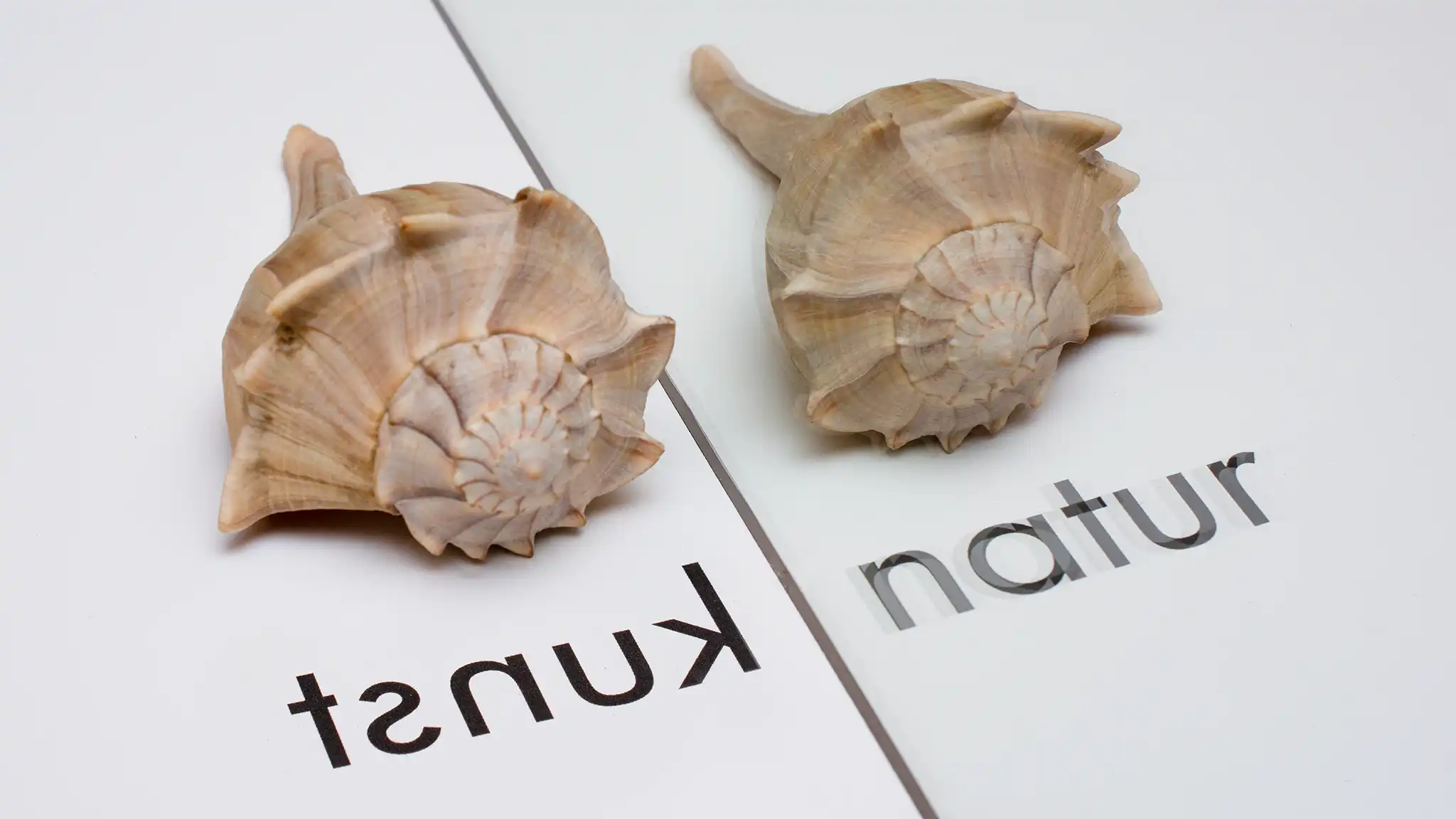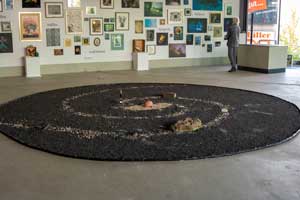Kunst und Natur, sind das nicht Gegensätze?
Kunst kann die Natur abbilden, aber diese bleibt nur Objekt?
Doch die Urheber der Kreativität - auch wir! – sind durch Evolution entstanden.
Wo sollte also die Grenze verlaufen?
Der Trennstrich im Kopf hat Konsequenzen, er versperrt den Blick auf das existenziell Wichtige. Wenn wir glauben, wir hätten uns von der Natur unabhängig gemacht, dann handeln wir danach. Manche denken, wir könnten auf sie verzichten – Technik wird es richten –, andere sagen, die Natur wäre ohne uns besser dran. Wir müssen unseren Platz neu definieren, damit sich statt der Zerstörung eine neue Symbiose entwickeln kann.
Mit kunst | natur möchten die Künstler die trennende Linie im Kopf in einen durchlässigen Spiegel verwandeln, der Bilder und Welten überlagert und neue Sichtweisen ermöglicht. Der verwirrt, um neue Klarheit zu ermöglichen.
ein besonderes Konzept
Drei KünstlerInnen mit Hintergründen in Natur- und Ingenieurwissenschaften, Pädagogik und biologischer Forschung erkunden in ihrem künstlerischen Dialog die Grenzen und Verbindungen zwischen Kunst und Natur. Gezeigt werden Malerei, Fotografie, digitale Kunst und Installationen, nicht in Reihe gehängt, sondern ins Gespräch gesetzt, zu Wolken arrangiert und von Naturobjekten, Sammlungsstücken und Naturfotografien kommentiert.
Eindrücke
Installation '… eine Welt in den Köpfen …'
Wäre die Erde, die Welt, besser dran, wenn wir verschwinden würden? Diese Einschätzung ist verlockend für Misanthropen und Naturfreunde – zumindest, solange man die Menschheit als etwas von der Natur Getrenntes betrachtet. Wie sähe die Welt nach uns aus? Das hängt nicht zuletzt davon ab, wie viele Arten und Lebensgemeinschaften wir mit uns in den Untergang reißen. Je mehr es werden, desto mehr neue werden entstehen, und umso wahrscheinlicher ist es, dass ganz neue, für uns unvorhersehbare Baupläne entstehen. Doch das wird Jahrmillionen brauchen …
Allein, dass wir dies vorhersagen können, zeigt, dass auf unserem Planeten etwas Besonderes passiert ist: Eine Tierart hat entdeckt, wo ihr Platz in dieser Vielfalt ist. Sie hat erkannt, welche Möglichkeiten sie hat und welche Bedrohung sie für andere und für sich darstellt. Mehr noch: Sie hat erkannt, woher sie kommt und wie sie entstanden ist. Sie kennt die Funktion der Welt im Kleinsten, von den Elementarteilchen über Atome und Moleküle, und wir wissen, dass wir aus dem Staub explodierter Sterne geboren sind. Sie weiß vom Urknall und von Galaxien!
Man könnte sagen: Das Universum ist sich auf unserem Planeten, in unserer Spezies, seiner selbst bewusst geworden!
Ist es noch anderswo geschehen? Vielleicht. Doch wir lauschen seit Jahrzehnten ins Weltall und haben bislang nichts von den ‚Anderen‘ entdecken können. Die Kette der Zufälle, die nicht nur zum Menschen geführt haben, sondern zum Erkennen, was wir sind, ist lang. Nichts davon war zwangsläufig, alles hätte an vielen Stellen scheitern können. Es ist gut möglich, dass wir die Einzigen sind, oder die Ersten.
Allein das sollte Motivation sein, die größte Anstrengung zu wagen: zu überleben! Nur dann haben wir die Chance, diesen Samen des Bewusstseins zu bewahren. Wenn wir aber verschwinden, wird wohl nie wieder ein Wesen auf dieser Erde nachts zum Himmel blicken und statt heller Punkte ein Universum erkennen.
ausführliche Version (PDF)
Buch zur Ausstellung
Diese Ausstellung ist mehr als eine Sammlung von Bildern, Exponaten, Objet trouvé's. Sie ist ein Herzensanliegen der Künstler in einer Welt, in der unser Verhältnis zur Natur überlebenswichtig ist. Dementsprechend gibt es so viel mehr zu erzählen, als Bilder es zeigen können. So entstand ein Buch zu kunst|natur, das Gedanken der Künstler vermittelt, die sich nicht im Rahmen an die Wand hängen lassen. Geschichten, Assoziationen, Wissenschaft, Science Fiction … Es ist in Werk im wachsen. Die aktuelle Version gibt es als PDF zum Download oder als gedruckte Ausgabe bei den Künstlern.
kunst|natur – Buch 2022 (14 MB, 156 Seiten)
TiefseeTräume
Am fand das Konzert 'TiefseeTräume' statt: Kontrabass- und Elektronik-Improvisationen von Lambda (Carsten Hundt) aus Leipzig (www.streichbass.com) untermalten und interpretieren Video-Projektionen von Tiefsee-Tauchfahrten zum Tiefseebewohnern, heißen Quellen und bizarren Landschaften.
Die Aufnahmen stammten vom Tauchroboter ROV Subastian des Schmidt Ocean Institute aus Palo Alto, Kalifornien. Gefilmt wurden sie bei der 'Underwater Fire'-Expedition zu Tiefseevulkanen vor Tonga im Jahr 2017.
Mit Lambdas Musik ergaben sie eine Klang- und Bildkomposition, die die Ideen um kunst|natur, die Verknüpfung von Kunst und Biologie, Wissenschaft und Kunst aufs Wunderbarste umsetzten. Wir danken Schmidt Ocean, dass wir diese Bilder nutzen konnten!
 english version
english version








